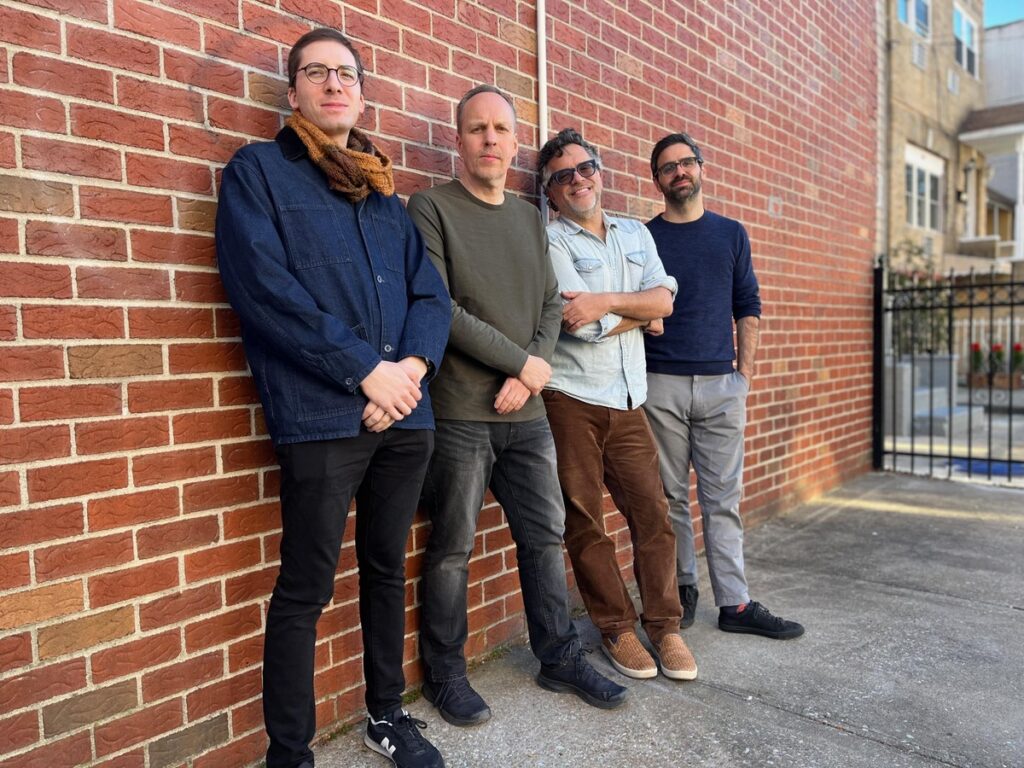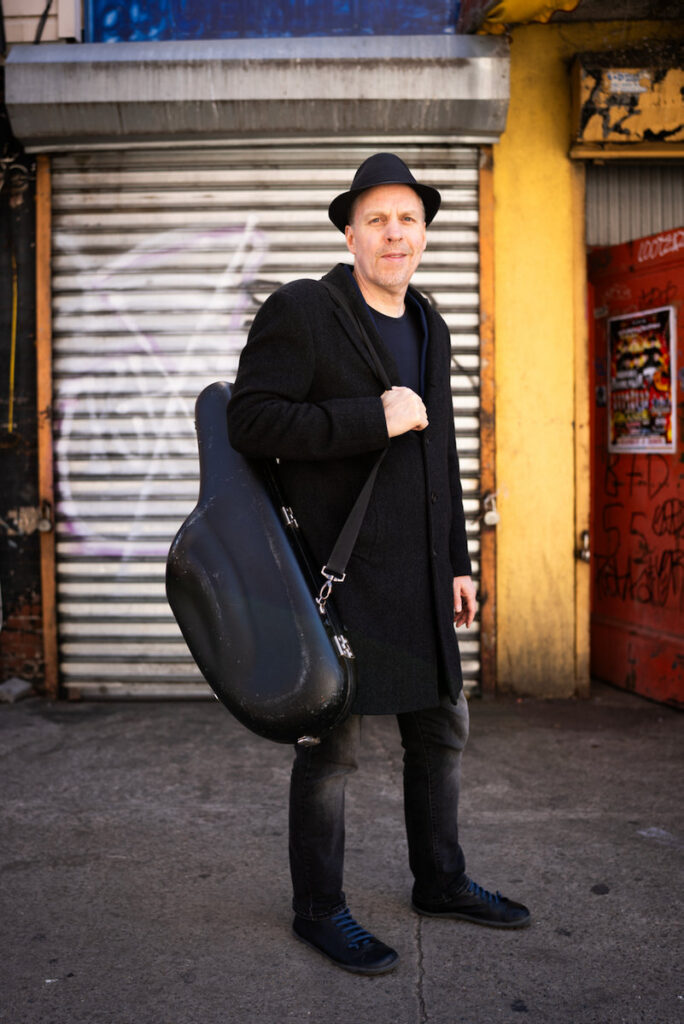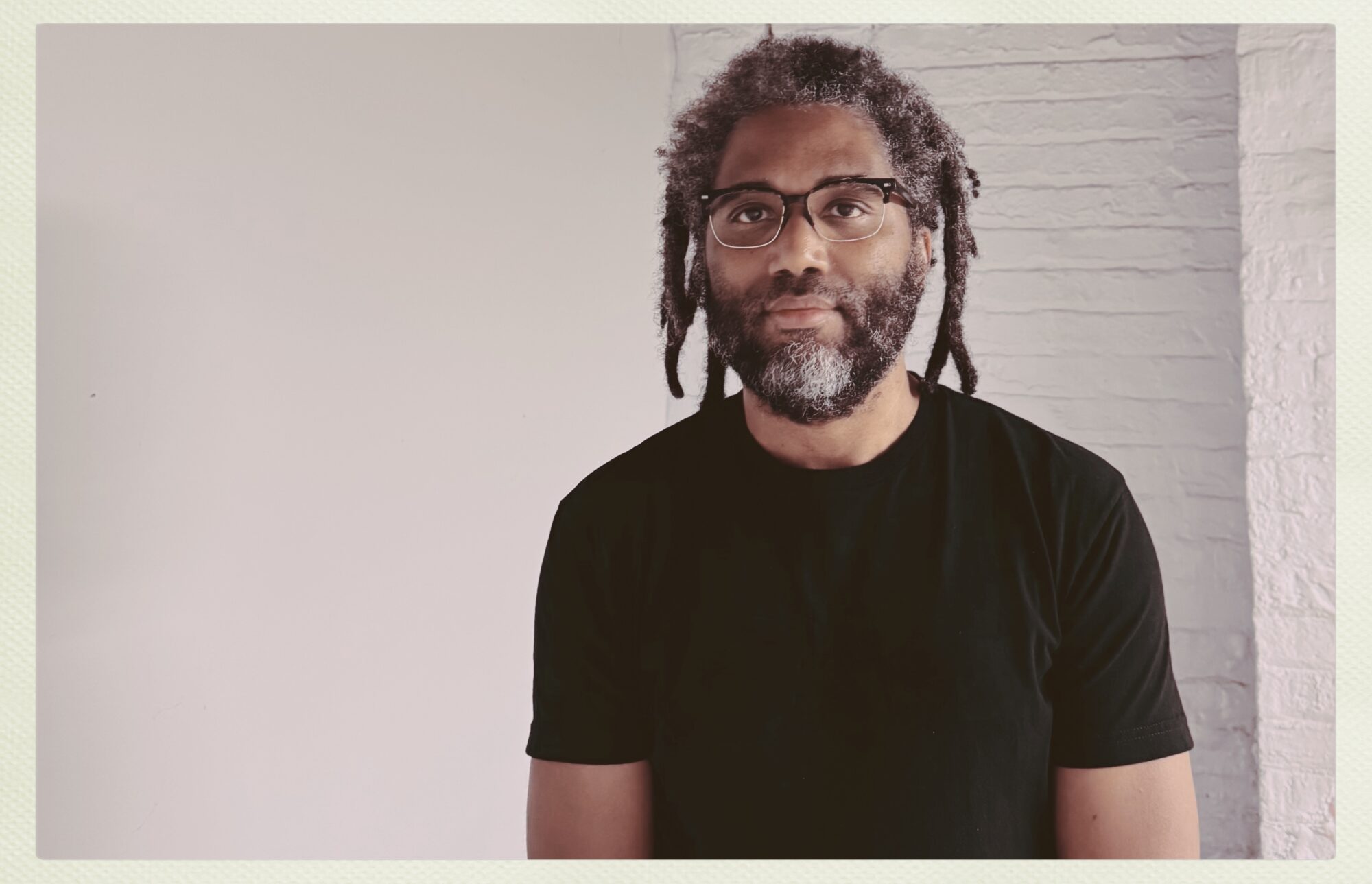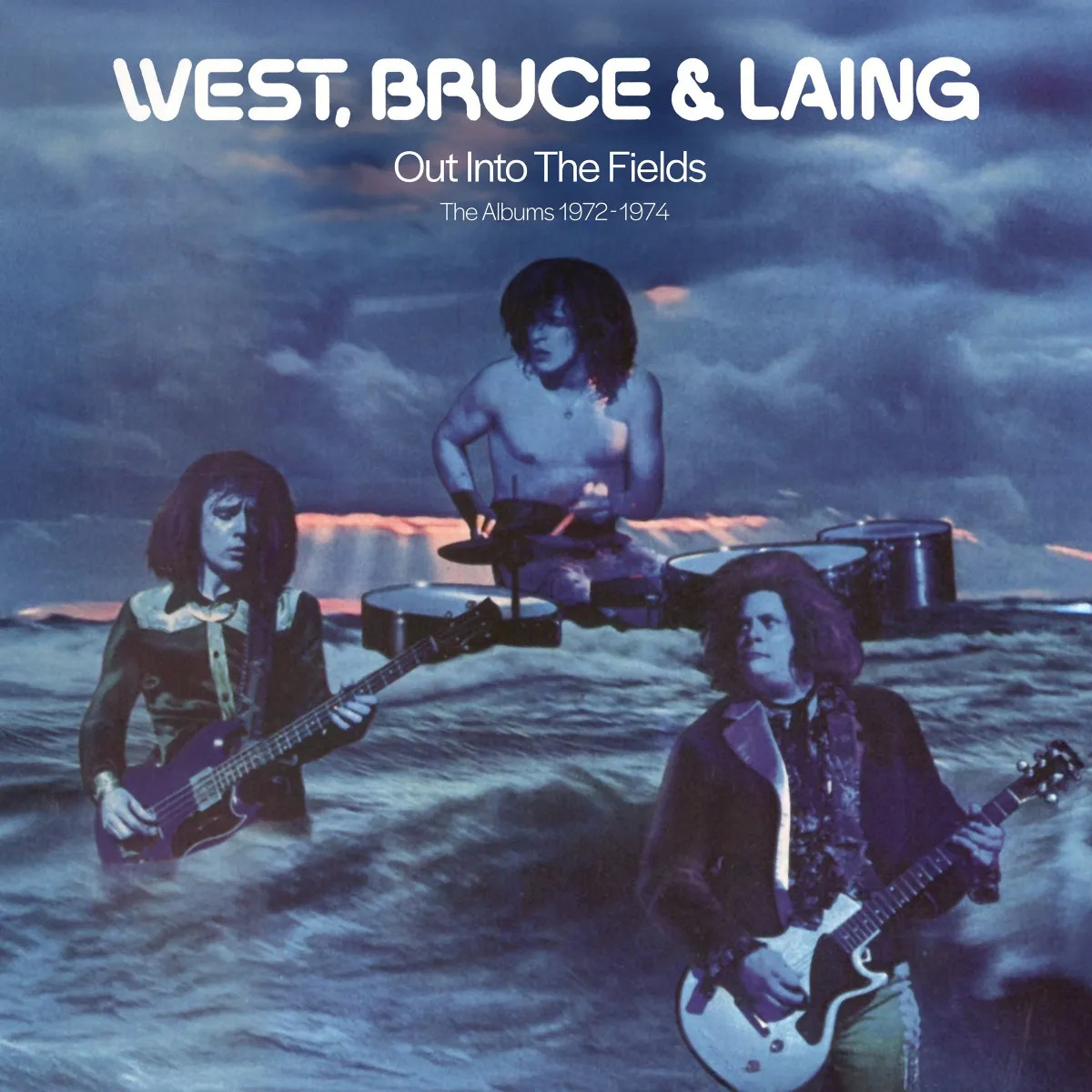Dave Anderson on His New Album, ‘In Lieu of Flowers’
‘In Lieu of Flowers,’ the latest album from composer and saxophonist Dave Anderson and his New York City based quartet, is a heartfelt tribute to the people and moments that shape a life.
It’s a musical mosaic honoring influences both legendary and personal. The album gracefully nods to giants of the genre like Wayne Shorter and Maria Schneider, while also celebrating the profound impact of music educators and family members who have guided Dave’s journey. Dave’s voice on both tenor and soprano saxophones is joined by a remarkable ensemble: the award-winning pianist Grant Richards, the versatile bassist Lorin Cohen, and the dynamic drummer Jimmy Macbride. This quartet moves as one, crafting a modern jazz sound while remaining deeply rooted in the genre’s history. The album’s ten original compositions, all penned by Dave, reveal a landscape as diverse as the inspirations behind them, featuring everything from up-tempo swingers to reflective ballads. We’re excited to dive into the stories behind this moving new work.

“For me it starts with melody.”
The album’s central theme is honoring those who have shaped your life. Could you elaborate on the creative tension, between writing a deeply personal piece like ‘Sanctuary’ and composing a tribute to a widely celebrated figure like Wayne Shorter? How do you balance the subjective emotional core of your personal experiences with the objective musical legacy of an artist you’re honoring, and what unique compositional challenges does each approach present?
Dave Anderson: The first challenge, whether writing music for a famous or familiar person, is can I imagine some music worth writing down, and sharing?
From there, the challenge of writing a tribute to Wayne Shorter was, how can I put a little bit of Wayne in it, but more importantly, something of my own, which might honor Wayne’s almost mystical beliefs in personal expression?
‘Sanctuary,’ written following the loss of my mother, required trust in the song. Will other musicians and audiences respond to something written from a deeply personal space? It took me 20 years to finally record it.
‘Stell’ is a fascinating example of musical homage, as you not only dedicate it to James Stellmaker but also create a “musical pun out of ‘Stella by Starlight’.” This suggests a dialogue between your original work and the jazz canon. Can you discuss your compositional process for this piece?
I started this tribute with a restraint: Could I take the chord progression from the jazz standard ‘Stella by Starlight,’ remove the musical note “A” from the chords, and write a new melody over it (thus turning “Stella” into “Stell”)? Once I had some ideas in place, considering James Stellmaker was such a family-oriented man, I derived melodies from the names of his wife and children to finish the tune. Using a matrix to assign musical notes (A thru G) to the whole alphabet, I spelled out DON/RON, MIKE, JIM and KIM and found places to add the corresponding musical notes. A key addition was his wife’s name HELEN – which I later realized was also the name of his mother. You could say his family helped make the song come together.
To what extent do you feel your own musical voice is defined by, or in conversation with, the historical jazz repertoire, and how does this piece specifically reflect that relationship?
One way to seek your own voice is to try to create something new on old foundations. Writing new melodies over old chord progressions is called writing a “contrafact,” and I wrote three on this album: ‘Outer Circle’ (from Joe Henderson’s ‘Inner Urge’), ‘Sandy’s Ladies’ (from Sonny Rollins’ ‘Airegin’) and ‘Stell’ (from ‘Stella by Starlight’). The standard repertoire is always there as a resource, and reworking “Stella” did feel like a conversation.
The press release mentions your move back to New York in 2011 to “reestablish yourself and initiate new projects.” Given your career trajectory—from CTI Records in the ’90s to the Seattle scene and back to New York—how has the concept of “home” or a sense of place influenced your compositional and performance styles? Are there specific geographical or cultural influences you feel are embedded in the DNA of ‘In Lieu of Flowers’ that might not be immediately obvious to a listener?
With jazz you strive to play the sound that’s in your head. For me that’s always been a New York-flavored sound, even when I was in Seattle. I assume my Minnesota origins are in the sound too – since I grew up in a place with some peace and stillness and open space.
‘In Lieu of Flowers’ returns you to the acoustic quartet format after working with an organ quartet on ‘Blue Innuendo’ and a world-music ensemble on ‘Melting Pot’. What was your primary motivation for returning to this specific instrumentation for this project? How did the sound of the acoustic quartet…and the special vibe with Grant Richards, Lorin Cohen, and Jimmy Macbride…shape the way you wrote the songs for an album full of personal tributes?
It’s a return-to-roots project for me, since my first album ‘Clarity’ was also mainly a quartet project. The songs on ‘In Lieu of Flowers’ were written over a period of years, and just waiting for the right band/project to record them. So the challenge was less about writing music to fit the band, but finding a band to give voice to the music. I couldn’t have been more pleased with being able to get Grant, Lorin and Jimmy’s talents on the album. They each brought something special to the group. Jimmy learns the music inside and out, comes in ready with ideas and suggestions, and his time always “pops.” Grant is very outgoing musically and personally and brings a spontaneous and fun vibe as an instigator. Lorin is very grounded in the music and connected to his instrument, and brings a lot of perspective and breadth. They really sound great together and bring the music to life.
Your tribute to Maria Schneider on ‘Arms of Maria’ is inspired by her “graceful conducting style.” This is a unique and abstract concept to translate into a musical composition. Can you walk us through how you translated the visual and kinetic experience of conducting into a sonic form?
When I first came to New York, and there were even fewer women on the jazz scene, Maria brought such a special energy to it, and part of that experience was seeing her conduct a big band. Her arms flow and shape the music, and she shows as much physical grace on the bandstand as personal grace off of it. So I tried to come up with a song to express some of that. Some of the melody notes arrive just ahead of chords to create a flowing feeling.
The album features both tenor and soprano saxophones. What criteria do you use to determine which voice is appropriate for a given piece? For a track like ‘Sanctuary,’ performed as a duo, why did the soprano saxophone feel like the right choice for that intimate, contemplative space, and how did its timbre shape the emotional landscape of the piece?
When I write on other instruments, I might choose the saxophone that works best for the written pitch range. Sometimes the choice of saxophones is gender-inspired. Soprano sax is pitched an octave above the tenor sax, like the corresponding voices in a choir. And the two tribute songs on the album inspired by women — ‘Sanctuary,’ following the loss of my mother, and ‘Arms of Maria’ for Maria Schneider — are both played on the soprano.
‘Lost City’ was inspired by your visit to St. Petersburg and its “beautiful city in decay.” The press release notes Lorin Cohen’s bass provides “counterpoint to the melody.” This suggests a musical structure that mirrors the duality of beauty and decay. Can you discuss how you specifically used counterpoint, or other musical devices, to sonically represent this historical and architectural paradox?
I first performed ‘Lost City’ after returning from St. Petersburg (then called Leningrad), and for me this tune became about St Petersburg in all of its beauty and tragedy. There’s an interaction between the bass, which plays “pedal tones,” and the melody moving in relation to it. Lorin anchors the tune from the bass, and poignantly plays the first solo.
One compositional device was to quote the “musical monogram” of Russian composer Dmitri Shotakovich at the end – a hero of mine who was from Leningrad. The song also has words that haven’t been recorded yet, ending with, “There’ll be a day when tears dry away and you’ll bloom again in Spring.”
You’ve mentioned that the album’s ten originals were “all first recorded for this project.” How much of the final form of these pieces was a result of the compositional process versus the improvisational and collaborative input of Richards, Cohen, and Macbride? Was there a specific moment of collective improvisation that significantly altered the direction of a track?
Jazz writing provides musicians with a melody and some structure around it. Some passages give the band latitude to create their part within the structure.
Grant, Lorin and Jimmy are highly creative and tasteful musicians. On the opening track ‘Outer Circle,’ behind Jimmy’s drum solo Grant and Lorin started adding markers of the “form” of the tune that were so hip I wished I had written them!
The track ‘Upwind’ is a powerful metaphor for facing adversity. In music, this idea of “sailing into the wind” could be interpreted in various ways—perhaps through harmonic friction, rhythmic complexity, or a sense of forward-driving intensity. How did you specifically represent this concept of a headwind in the music itself?
Some songs resolve tension in expected ways. ‘Upwind’ takes an unexpected turn; technically there is a phrase with an “odd number” of measures. The band plays this seamlessly and as Grant said in rehearsal, “I don’t even hear the extra measure.” In sailing you turn against the wind and still manage to get where you need to go.
Your bio notes that your music is “harmonically complex, melodically compelling and rhythmically exciting, yet accessible and appealing to lay listeners.” This is a significant goal for any contemporary jazz artist. How do you approach this balance in your writing?
For me it starts with melody. If you create a melodic thread that listeners can follow, there can be a lot of complexity around it.
For a non-musician, could you provide an example from the album of a harmonically complex moment that is made accessible through its melodic or rhythmic context?
The song ‘Ghost Bikes’ has a lot of harmonic color changes and bass movement, but I’d like to think the melody ties the whole together for listeners.
The album title, ‘In Lieu of Flowers,’ suggests a shift in how we honor people—not with a traditional gesture of grief, but with something more lasting and personal. As a composer, do you see your music as a form of eternal, or at least enduring, tribute?
Flowers don’t last very long, right? Music gets made in the present, but if people decide to enjoy it again in the future, I’m gratified.

What’s next for you?
I’ll keep looking for the next musical idea worth writing down, the next chance to perform it.
Klemen Breznikar
Headline photo: Dave Anderson (Gulnara Khamatova @gulnaraphotographer)
Dave Anderson Website / Facebook / Instagram / YouTube




